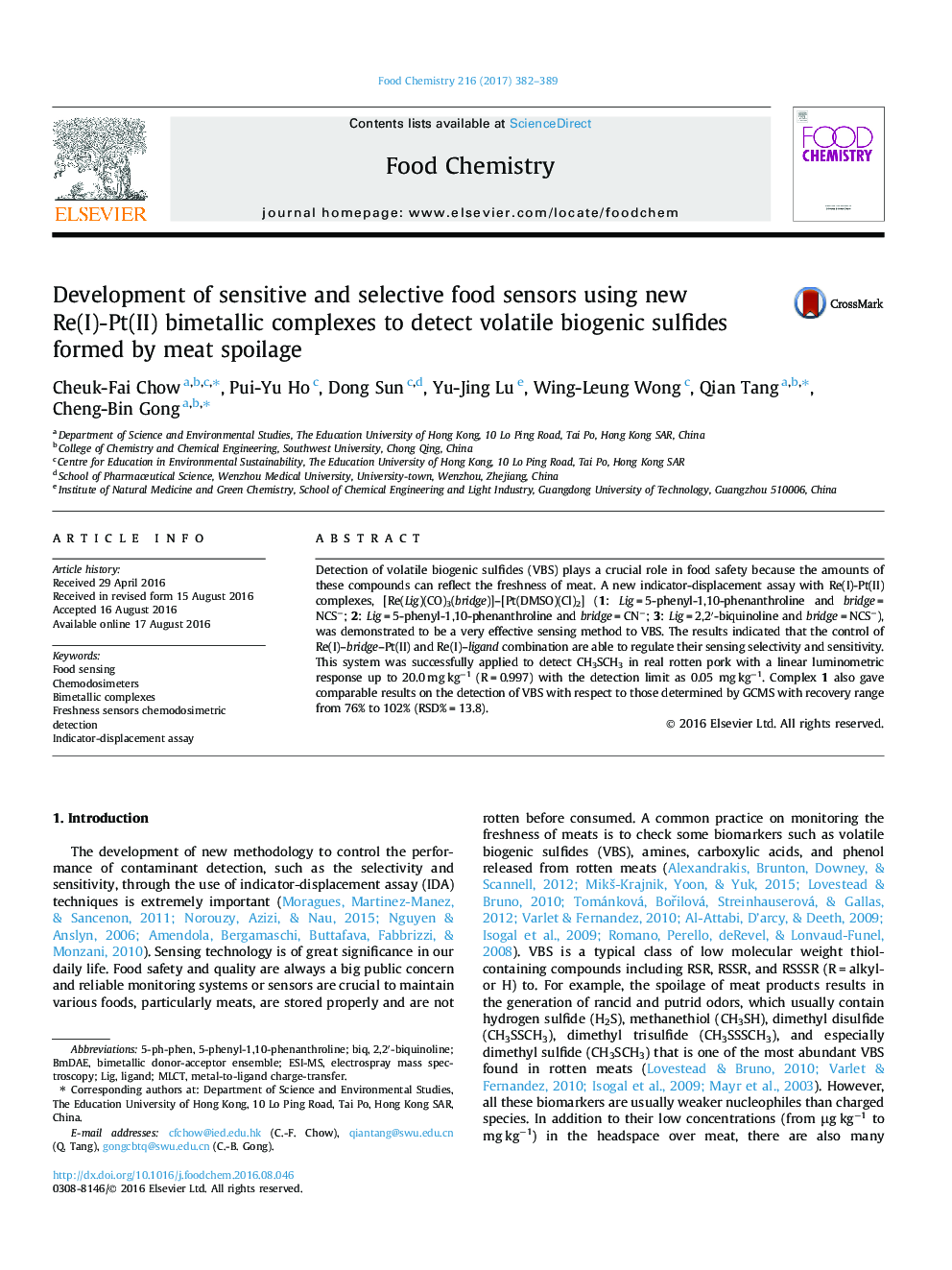| کد مقاله | کد نشریه | سال انتشار | مقاله انگلیسی | نسخه تمام متن |
|---|---|---|---|---|
| 1183091 | 1492076 | 2017 | 8 صفحه PDF | دانلود رایگان |
• Rational design and assemble of new bimetallic based chemodosimeters.
• The Re(I)-Pt(II) complex is a good food detector for volatile biogenic sulfides.
• Naked-eye luminescent responses specific to CH3SH and CH3SCH3 by the food detector to check the freshness of meat.
• Applicable for in-situ CH3SH monitoring in real rotten pork samples and as efficient as GCMS detection.
Detection of volatile biogenic sulfides (VBS) plays a crucial role in food safety because the amounts of these compounds can reflect the freshness of meat. A new indicator-displacement assay with Re(I)-Pt(II) complexes, [Re(Lig)(CO)3(bridge)]–[Pt(DMSO)(Cl)2] (1: Lig = 5-phenyl-1,10-phenanthroline and bridge = NCS−; 2: Lig = 5-phenyl-1,10-phenanthroline and bridge = CN−; 3: Lig = 2,2′-biquinoline and bridge = NCS−), was demonstrated to be a very effective sensing method to VBS. The results indicated that the control of Re(I)–bridge–Pt(II) and Re(I)–ligand combination are able to regulate their sensing selectivity and sensitivity. This system was successfully applied to detect CH3SCH3 in real rotten pork with a linear luminometric response up to 20.0 mg kg−1 (R = 0.997) with the detection limit as 0.05 mg kg−1. Complex 1 also gave comparable results on the detection of VBS with respect to those determined by GCMS with recovery range from 76% to 102% (RSD% = 13.8).
Figure optionsDownload as PowerPoint slide
Journal: Food Chemistry - Volume 216, 1 February 2017, Pages 382–389
